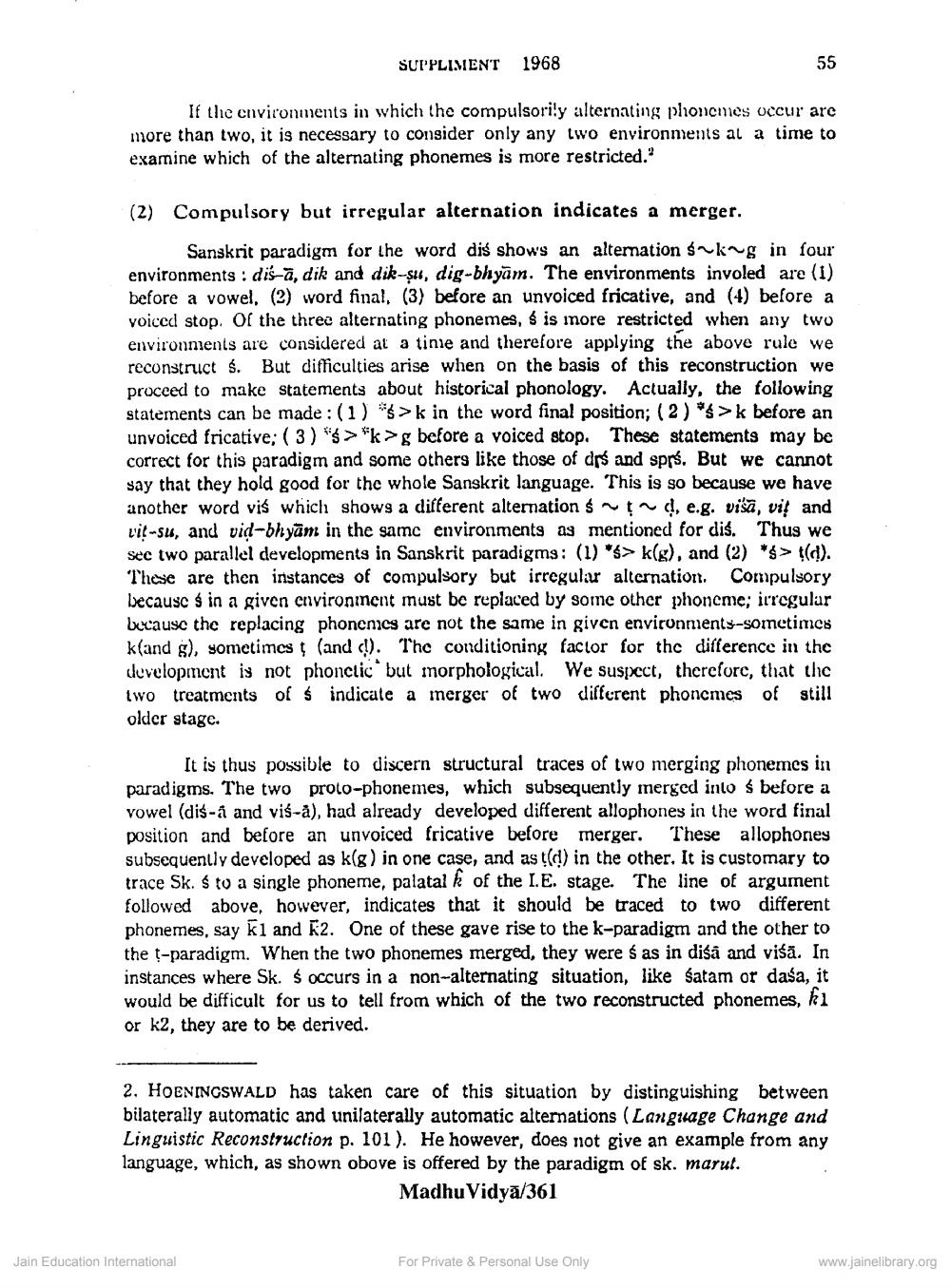________________
SUPPLIMENT 1968
55
If the environments in which the compulsorily alternating phonemes occur are more than two, it is necessary to consider only any two environments al a time to examine which of the alternating phonemes is more restricted."
(2) Compulsory but irregular alternation indicates a merger.
Sanskrit paradigm for the word diś show's an alteration $~ ~g in four environments : dis-a, dik and dik-şu, dig-bhyam. The environments involed are (1) before a vowel, (2) word final. (3) before an unvoiced fricative, and (4) before a voiced stop. Of the three alternating phonemes, $ is more restricted when any two environments are considered at a tinie and therefore applying the above rule we reconstruct s. But difficulties arise when on the basis of this reconstruction we proceed to make statements about historical phonology. Actually, the following statements can be made: (1) * >k in the word final position; (2) s>k before an unvoiced fricative; (3) 5 > *k>g before a voiced stop. These statements may be correct for this paradigm and some others like those of drs and sprś. But we cannot say that they hold good for the whole Sanskrit language. This is so because we have another word viś which shows a different alternation Ś ~ ~d, e.g. viša, vit and vit-su, and vid-bhyām in the same environments as mentioned for diś. Thus we See two parallel developments in Sanskrit paradigms: (1) *5> k(g), and (2) s> (d). These are then instances of compulsory but irregular alternation. Compulsory becausc s in a given environment must be replaced by some other phoncme; irregular because the replacing phoncnics are not the same in given environments-sometimes k(and s), sometimes ţ (and (!). The conditioning factor for the difference in the development is not phonclic but morphological. We suspect, therefore, that the two treatments of $ indicate a merger of two different phoncmes of still older stage.
It is thus possible to discern structural traces of two merging phonemes in paradigms. The two proto-phonemes, which subsequently merged into s before a vowel (dis-8 and vis-à), had already developed different allophones in the word final position and before an unvoiced fricative before merger. These allophones subsequently developed as k(g) in one case, and as (d) in the other. It is customary to trace Sk. $ to a single phoneme, palatal k of the I.E. stage. The line of argument followed above, however, indicates that it should be traced to two different phonemes, say ki and K2. One of these gave rise to the k-paradigm and the other to the t-paradigm. When the two phonemes merged, they were s as in diśå and viśā. In instances where Sk. $ occurs in a non-alternating situation, like satam or daśa, it would be difficult for us to tell from which of the two reconstructed phonemes, ki or k2, they are to be derived.
2. HOENINGSWALD has taken care of this situation by distinguishing between bilaterally automatic and unilaterally automatic alternations (Language Change and Linguistic Reconstruction p. 101). He however, does not give an example from any language, which, as shown obove is offered by the paradigm of sk. marut.
Madhu Vidya/361
Jain Education International
For Private & Personal Use Only
www.jainelibrary.org




